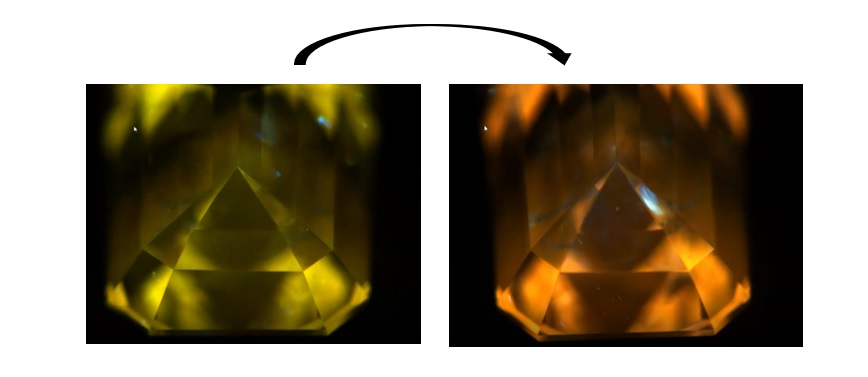Recently Gemological Science International's (GSI) interest was drawn to a CVD lab grown diamond weighing 1.547 ct., emerald cut, VS1 clarity and H color, which was submitted to the Mumbai Lab for Post Growth Treatment Identification

Lab Grown Diamonds have gained increased popularity in recent times. Today’s cutting-edge technology has made it possible to replicate a diamond’s natural growth in highly controlled environments. The result has been the production of lab grown diamond in a few days, or weeks, with minimum investment. Lab grown diamonds are identical to a mined diamonds chemically, physically, and optically, but cost about 50% less.
CVD (Chemical Vapor Deposition) and High pressure and High temperature (HPHT), are the most common lab grown diamond manufacturing processes, and each of the methods have their own distinguishing factors, enabling gemologists and well-equipped labs to identify them.
CVD lab grown diamonds shows distinct fluorescence when exposed to a conventional SWUV (Short-wave Ultra-Violet) lamp (280-315 nm). Typical SWUV reaction observed in CVD lab grown diamonds are orange, yellow, green, violet or blue fluorescence colors. Prolonged exposure to SWUV may have some effect, and a change in fluorescence color can be observed (Eaton-Magaña & Shigley 2016, Wang et al., 2003, 2005, 2007, 2010, 2012).
Be the first to comment